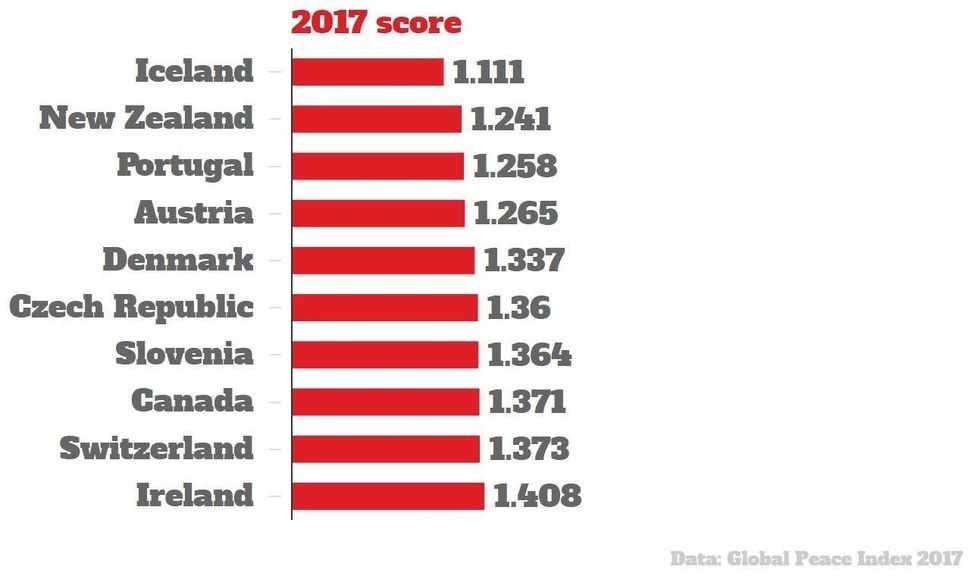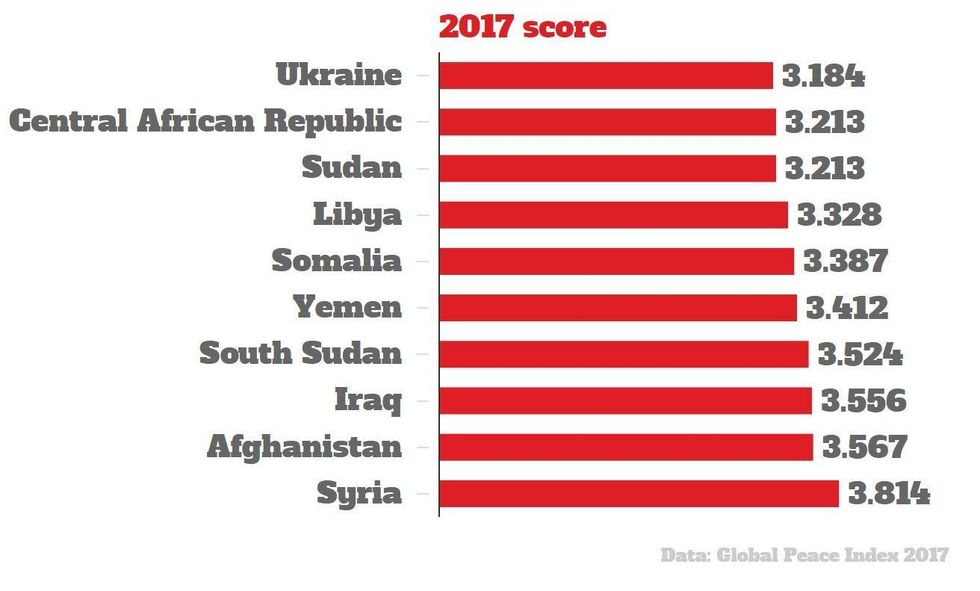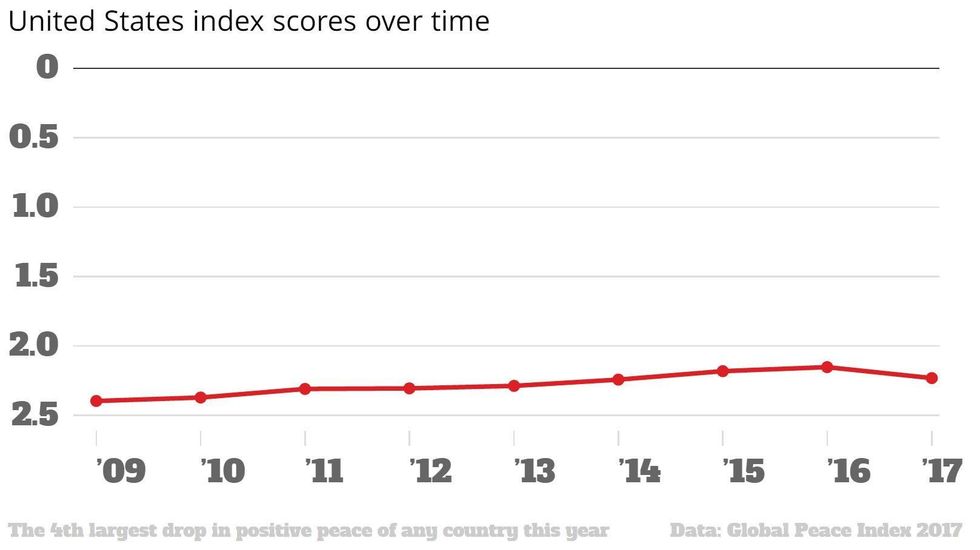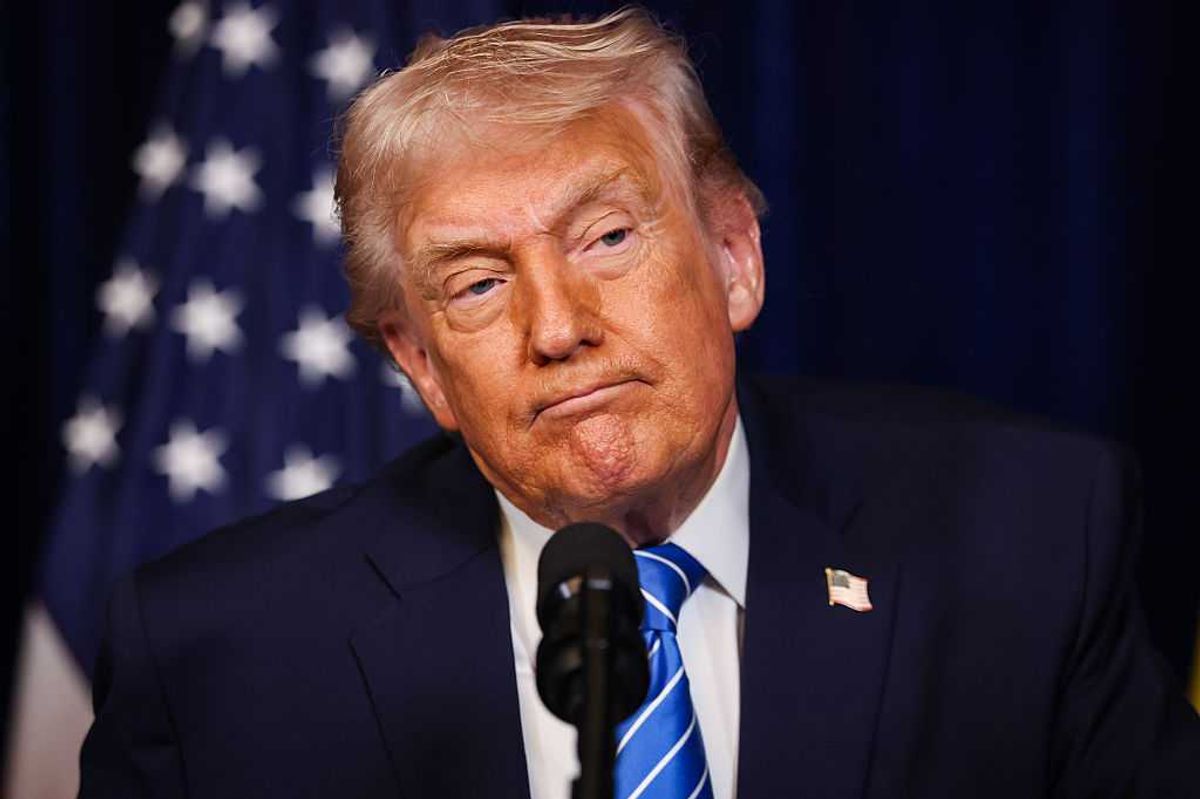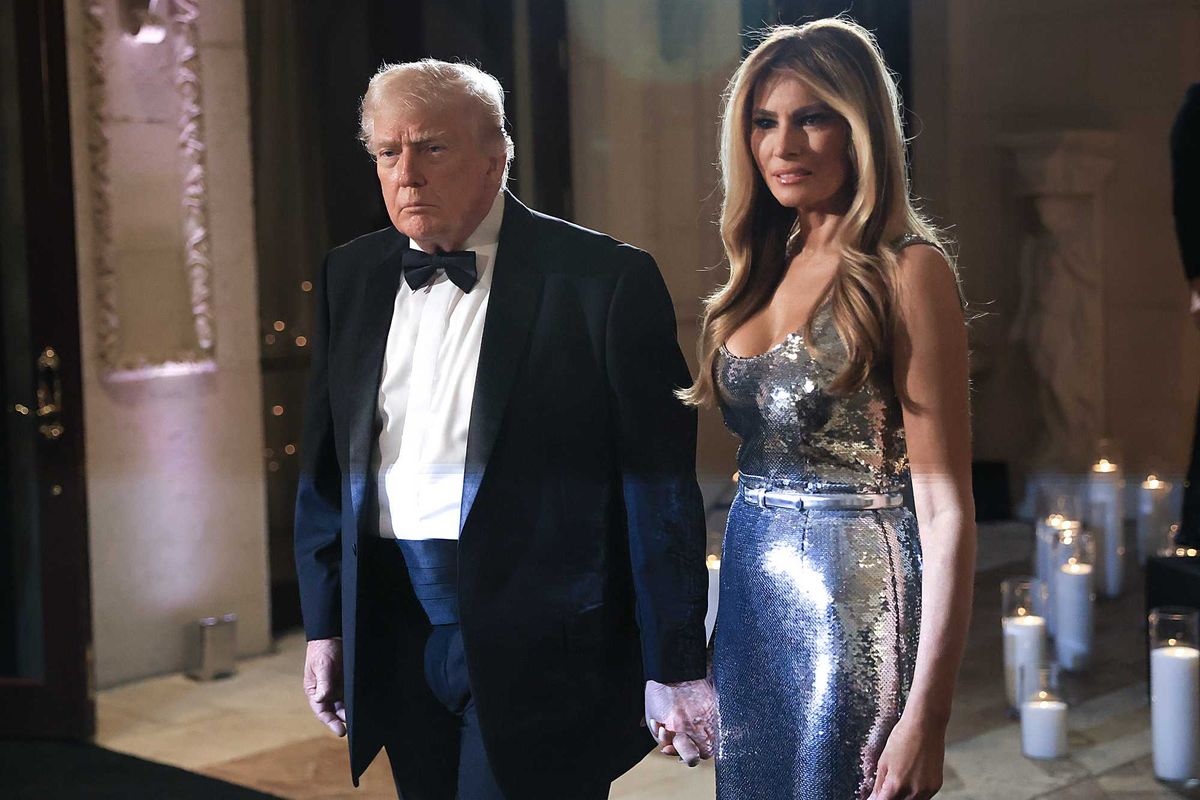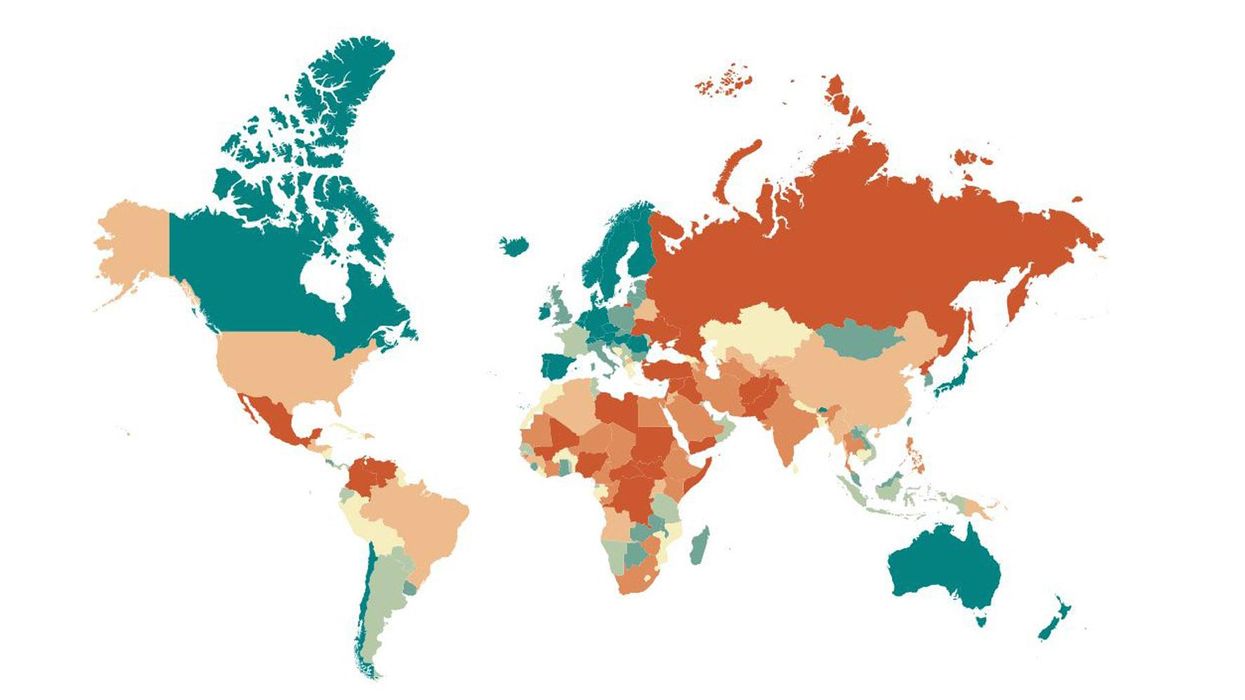
Global peace slightly improved in the past year, a major index has found.
The Global Peace Index 2017, by the Institute of Economics and Peace (IEP) found that the global level of peace slightly improved, by 0.28 per cent in score. A total of 93 countries improved, while 68 countries deteriorated.
Iceland remains the most peaceful country in the world, holding the position it has occupied since 2008. It is followed by New Zealand, Portugal, Austria and Denmark.
At the other end, Syria remains the least peaceful country in the world, joined by Afghanistan, Iraq, South Sudan, and Yemen.
The index is scored on a scale from one to five, one being most peaceful, five being the least.
The Index:
Here's an overall look at the index scores, covering 99.7 per cent of the world's population:
The ten most peaceful countries:
The ten least peaceful countries:
Changes since 2016:
Speaking continentally, six of the nine regions in the world improved - the most improvement being found in South America.
Here's a look at the change in scores since the 2016 index:
The report highlighted a few areas of note, which we discussed with Steve Killelea, the founder and executive chairman of the IEP.
The United States:
The report highlighted a deteriorated score for the United States as contributing to a decline in North America's regional score:
The past year has been a deeply worrying one for the US, with the presidential campaign highlighting the deep divisions within American society.
Steve Killelea told indy100 this also was linked with a increase in criminality in the United States combined with an increase in the homicide rate:
We know that there will be still another uptick in the homicide rate when the next set of figures come through.
The change in the homicide rate is a change in a twenty year trend. We’ve had a couple of years running now where it is slightly starting to come back up.
Other measures also contribute:
The perception of criminality does seem to follow the increase in the homicide rate. The other one is the measure of internal conflict. The US has moved from a 1 to 2 on this.
This, Steve says, is fuelled by political forces and sharp differences between various political groups within the country, both in the last election and the one prior, to the point that there were demonstrations against the incumbent leader:
You’ve got political discord from both sides, it’s not just one side or the other – such that both sides see the other side being dangerous to the national interest.
There are also indicators that declined in the United States that are associated with a peaceful society. These include freedom of information and of the press, inequality and societal grievances from minority groups and perceptions of corruption:
You’ve got an attack on journalists to give up their sources of information, under both Obama and the incumbent – Presidents attacking journalists.
There’s a number of grievances in the states as well that can be epitomised by the Black Lives Matter movements. We’ve seen decays in the levels of income equality within the US as well over however a lengthy period of time. Also a rise in the perception of corruption within politics.
So all these things come back to what we’d describe as falling levels of positive peace. If we look in the US it’s got the fourth largest drop in positive peace of any country in the world. That’s against a backdrop where three quarters of the countries in the world actually increased their positive peace. That’s really quite something.
So what's missing?
The need for the country to define what its social contract is. What is the country meant to be about? What is the nation’s intent?
Similar, but less obvious indicators such as these are also occurring in...
Europe:
The report highlighted the rise of populism, citing that it, and anti-establishment politics, can be associated with deterioration in:
- Free flow of information.
- Low levels of corruption.
- Acceptance of the rights of others.
- Well-functioning government and inequality.
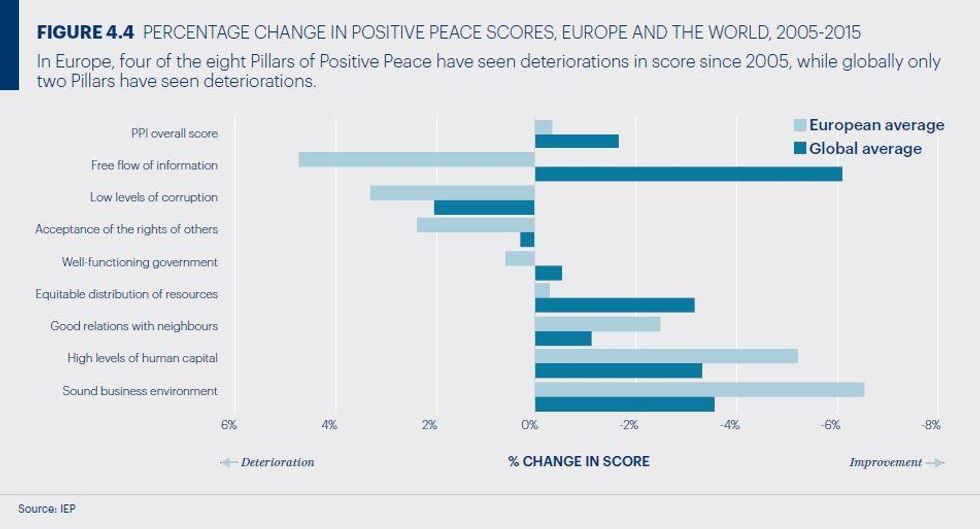
Steve Killelea told indy100:
We don’t look at these things from a causal perspective, we see it from a systems perspective. There are similar sorts of things going on in Europe as the US, only it’s not as strong.
Europe over the prior decade has remained completely flat in terms of positive peace. However, there are a number of countries that have had falls and there are a number of indicators that have had steep falls.
We’ve found that the free flow of information has decreased in Europe. It’ll vary from country to country but you can bring it back to the rise in terrorism
We can see a growing level of non-acceptance of the rights of other people. This is particularly true of immigration, hostility to refugees and hostility to Muslims, and hostility to people from foreign countries.
A lot of this is on the back of a decay of what we’d term an equitable distribution of resources. We can see that this comes back to the rising gap between the rich and the poor levels of society. There’s also increased levels of perception of corruption, particularly within the political elites.
So if you look at Europe as a whole, 68 per cent of citizens think politicians are corrupt or extremely corrupt, that compares to about 25 per cent who think NGOs and the military are corrupt or extremely corrupt.
Again, Steve says, to address the rise of populism, the question needs to be addressed:
What is the social contract? What is the national intent of these countries?
United Kingdom:
The report cited Brexit as a wobble point for the UK:
The Brexit vote in the UK revealed high levels of polarisation within the society, which has resulted in political uncertainty; however, the political scene was relatively stable after the new prime minister was installed. A continued improvement in the UK’s overall score is driven by international conflict indicators, following the country’s withdrawal from Afghanistan in 2014.
Killelea told indy100 that upcoming Brexit negotiations represented a possible deterioration in the UK's peace:
I think with Brexit, the thing that is most likely to affect the score is if there’s an economic downturn, this can lead to more crime, more demonstrations and political instability.
Provided the economics of Brexit are managed correctly, it will not impact on the peace – if they are not, we’ll see the normal effects which flow on from decreases in wealth.
A point to be made about the UK's score is also that the report does not include the Manchester Arena terrorist attack, as it occurred too recently to include within the publication.
Steve said:
With Manchester, obviously there will be a fall in the terrorism indicator for the UK next year.
What will determine its overall standing will be what happens with a range of other indicators and at this stage it’s too hard to tell.
Terrorism increased 247 per cent from 2007 to 2017:
This statistic, formed part of a overview of ten year trends, which found:
- Global Peace deteriorated 2.14 per cent in the last decade.
- Battle deaths increased 408 per cent.
- The number of refugees, internally displaced persons, and others of concern the UN refugee agency, doubled. 63,912,700 in 2016.
Killelea told indy100:
Most of those deaths have occurred in a handful of countries. Nigeria, Iraq, Afghanistan, Syria and Pakistan. If we go over that period of time – 72 per cent of deaths occurred in those countries.
However, in the last twelve months there was a ten per cent drop in the number of people killed from terrorism, to 28,000.
That was mainly due to drops in Nigeria from Boko Haram, and Isis in Iraq. Both of these groups have now expanded out into surrounding territories. That’s caused this jump to 23 countries suffering the highest number of terrorist deaths in their history, which is a record number, up from 16 in the prior year.
In many of these countries it’s mainly Isis, Isis affiliated or Isis-inspired attacks.
Looking forward:
So what can be done to combat brewing instability and the deterioration of peace?
The index estimates that the cost of conflict in 2016 was $1.04 trillion. Reducing this can lead to significant positive impact on relevant states.
In addition, preventative peacebuilding expenditures are distributed unevenly. In the past 12 years, Afghanistan and Iraq received 49 per cent of donor-financed peacebuilding.
The total cost of conflict in countries predicted (and yes there are models for conflict risk - the IEP itself identified Syria between 2008 and 2017) to be at risk was twelve times higher than the estimated level of ideal peacebuilding expenditure required to prevent conflict.
IEP estimates show that the cost of violent conflict in 2013 was over 120 times higher than peacebuilding and peacekeeping funding.
An investment from a recent IEP analysis in Rwanda showed the return on the investment could be up to 16 times as cost effective.
However, as Steve points out, there are hurdles:
In the production of that analysis we used Rwanda as a bench case of what needed to be spent to get the optimal amount of money spent on peacebuilding. We took a basket of conflicts that occurred in the region previously, we looked at what that cost those economies.
There was a 16 to one return on investment on peacebuilding if the peacebuilding intervention was successful.
What do interventions need to be successful?
You need enough lead time to do it and do it effectively. A lot of peacebuilding is dependent on the capacity in society at a governmental level and the policing and security levels. A lot of it is about building capacity and that takes time.
Political dynamics are also important. In some cases it may be outside influences who don’t actually want changes. There can be a whole level of international political dynamics, especially if you have two sides at loggerheads supported by opposite outside parties.
You also need the cooperation of the groups internally, quite often these involve group grievances and discrimination against another group. Quite often it’s very hard to get people to give up those positions.
The Global Peace Index uses 23 qualitative and quantitative indicators to measure the state of peace using three thematic domains:
- Level of Societal Safety and Security.
- Extent of Ongoing Domestic and International Conflict.
- Degree of Militarisation.
